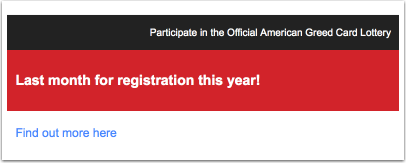 September’s big adventure was our trip to Stockholm, where I gave the keynote address at the APSIS Conference (Look for a wrapup post with beautiful photos of palaces soon!) and had lots of interesting conversations about all things email-related.
September’s big adventure was our trip to Stockholm, where I gave the keynote address at the APSIS Conference (Look for a wrapup post with beautiful photos of palaces soon!) and had lots of interesting conversations about all things email-related.
Now that we’re back, we’re working with clients as they prepare for the holiday mailing season. We wrote a post on why it’s so important to make sure you’ve optimized your deliverability strategy and resolved any open issues well in advance of your sends. Steve covered some similar territory in his post “Outrunning the Bear”. If you haven’t started planning, start now. If you need some help, give us a call.
In that post, we talked a bit about the increased volumes of both marketing and transactional email during the holiday season, and I did a followup post this week about how transactional email is defined — or not — both by practice and by law. I also wrote a bit about reputation and once again emphasized that sending mail people actually want is really the only strategy that can work in the long term.
While we were gone, I got a lot of spam, including a depressing amount of what I call “legitimate spam” — not just porn and pharmaceuticals, but legitimate companies with appalling address acquisition and sending strategies. I also wrote about spamtraps again (bookmark this post if you need more information on spamtraps, as I linked to several previous discussions we’ve had on the subject) and how we need to start viewing them as symptoms of larger list problems, not something that, once eradicated, means a list is healthy. I also posted about Jan Schaumann’s survey on internet operations, and how this relates to the larger discussions we’ve had on the power of systems administrators to manage mail (see Meri’s excellent post here<).
I wrote about privacy and tracking online and how it’s shifted over the past two decades. With marketers collecting and tracking more and more data, including personally-identifiable information (PII), the risks of organizational doxxing are significant. Moreso than ever before, marketers need to be aware of security issues. On the topic of security and cybercrime, Steve posted about two factor authentication, and how companies might consider providing incentives for customers to adopt this model.
Read More
